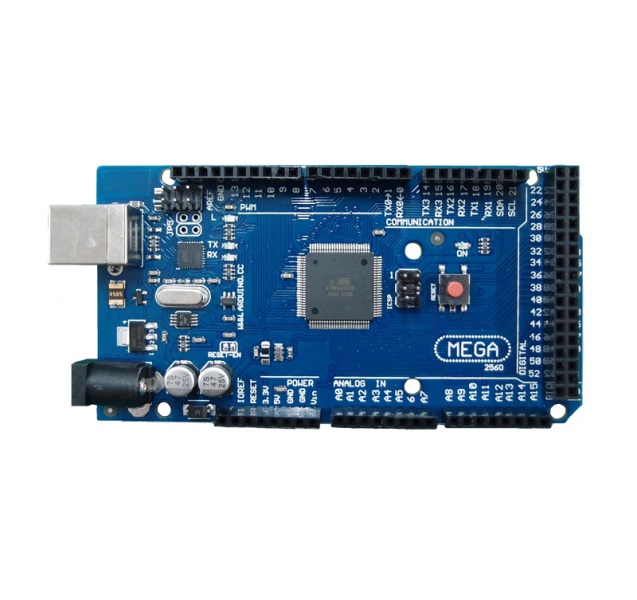
Input Voltage: This is the suggested input voltage range for the board. The Arduino development board is based on AVR microcontrollers of different types, each of which have different functions and features. Microcontroller (MCU): The microcontroller is the heart (or, more appropriately, the brain) of the Arduino board.
#Arduino mega 2560 r3 serial#
Serial communication can be achieved through the FTDI header. ‡The LilyPad Simple Board does have one UART but the pins aren't broken out to pads. An Xbee module is not included with this board. †The miniUSB connector on the Arduino Fio is used for battery charging only. *The Arduino Leonardo has the same GPIO pin-count as the other "Uno" style boards, but more of the pins play "double duty" as both analog and digital pins, hence the higher numbers. The boards are sorted by their main microcontroller, which is what defines most of the characteristics for each of them.ĪTmega328 Boards - 32kB Program Space // 1 UART // 6 PWM // 4-8 Analog Inputs // 9-14 Digital I/OįTDI-Compatible Header or Wirelessly via XBee †ĪTmega32U4 Boards - 32kB Program Space // 1 UART // 5-7 PWM // 12 Analog Inputs // 9-20 Digital I/OĪTmega2560 Arduino Mega's - 256kB Program Space // 4 UARTs // 14 PWM // 16 Analog Inputs // 54 Digital I/OĪT91SAM3X8E Arduino Due - 512kB Program Space // 4 UARTs // 12 PWM (2 DAC) // 12 Analog Input // 54 Digital I/O If you need help installing it, visit this tutorial.įor a quick cross-comparison of the available Arduinos, here's a (totally tubular) tabular look at the variety of boards.

You should also have a good understanding of the Arduino IDE.If you don't know what Arduino is but found yourself here, you may want to start with our What is an Arduino tutorial.Check the chart on the next page to find the right Arduino for your project. Some can run directly from a 3.7V battery, others need at least 5V. Some boards are designed to be embedded and have no programming interface (hardware) which you would need to buy separately. The number of inputs and outputs (how many sensors, LEDs, and buttons you can use on a single board), speed, operating voltage, and form factor are just a few of the variables. Beyond that, there can be a lot of differences.
#Arduino mega 2560 r3 software#
This is the software that allows you to write and upload code.

Really, you can do almost anything.Īll Arduino boards have one thing in common: they are programmed through the Arduino IDE.
#Arduino mega 2560 r3 code#
Or more simply, you load on some code and it can read sensors, perform actions based on inputs from buttons, control motors, and accept shields to further expand it's capabilities. It's intended for artists, designers, hobbyists, and anyone interested in creating interactive objects or environments. These properties make nGen more workable at a wider breadth of temperatures, producing reliable results and resulting in less waste.Arduino is an open-source electronics prototyping platform based on flexible, easy-to-use hardware and software. With nGen you will have good flow properties through the printer nozzle-even at lower temperatures than some other polymers require.

nGen is a low-odor, styrene-free material uniquely suited for 3D printing enthusiasts, particularly those who need the flexibility to print within a wide processing temperature range. Like colorFabb_XT, it is part of Eastman’s Amphora range of copolyesters for 3D printing.


 0 kommentar(er)
0 kommentar(er)
